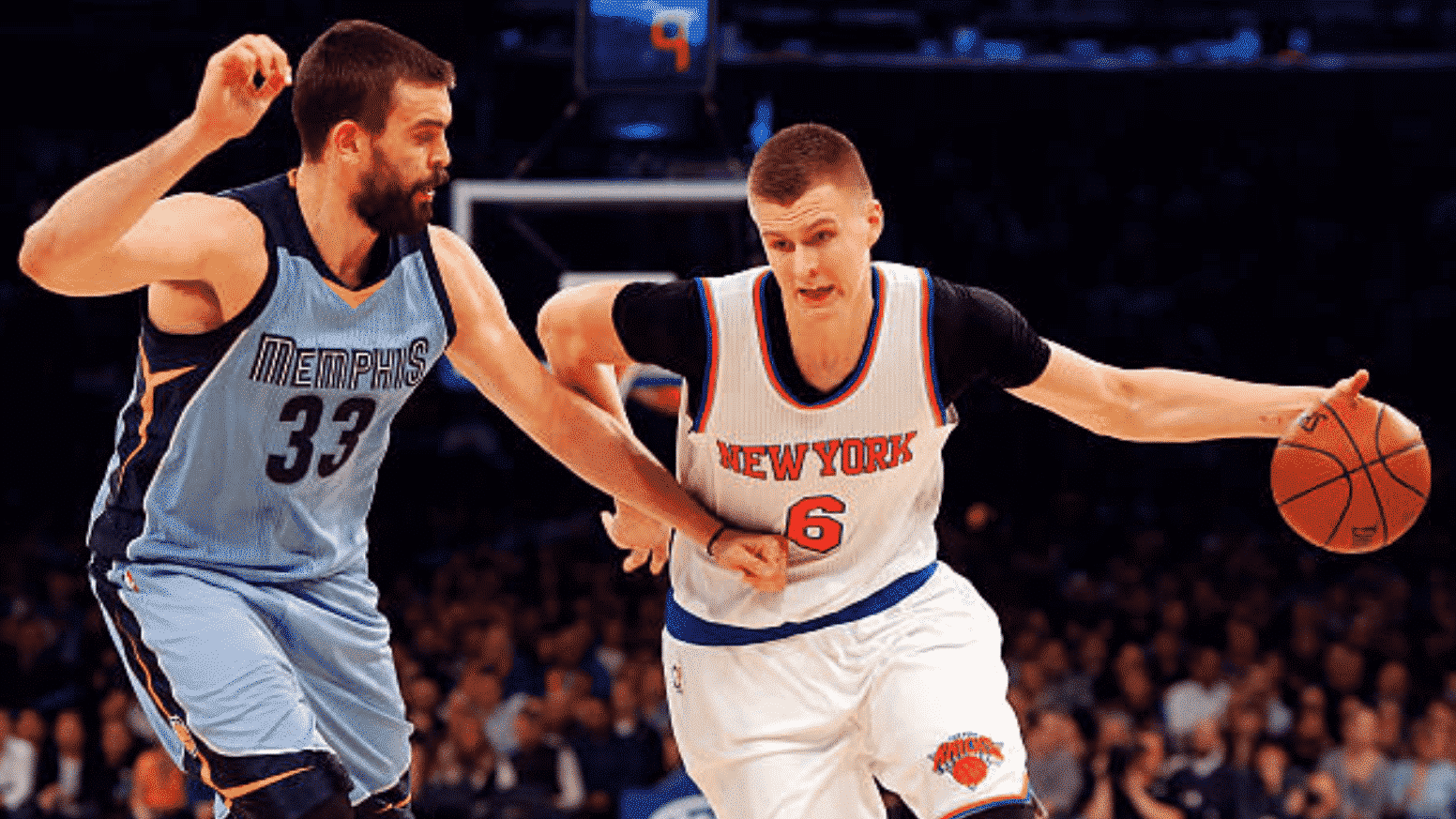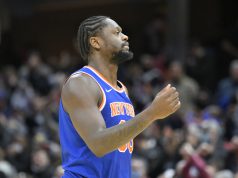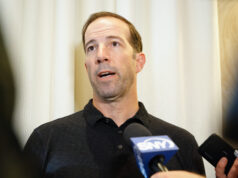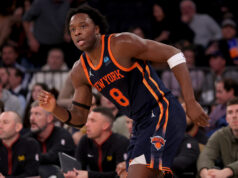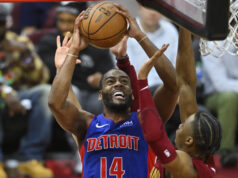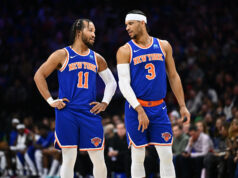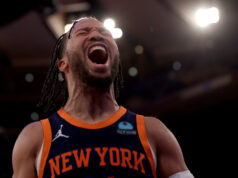Although Kristaps Porzingis’ season is in doubt, it isn’t too early for the New York Knicks to gameplan the best ways to utilize the unicorn.
The New York Knicks ranked 23rd in the league with a substandard offensive rating of 104.1 in 2017-18. The offense needs a makeover and David Fizdale may be the right man for the job. Fiz won’t have his unicorn for at least the first half of the season. But there’s no doubt he’s already cooking up offensive sets for Kristaps Porzingis.
Porzingis had a breakout campaign last season and his scoring average has increased in each of his first three seasons (14.3–18.1–22.7). But there’s still room for the Latvian to grow.
His career assist average of 1.3 per game is pedestrian at best, but there’s more to his ineptitude. Porzingis’ assist percentage was 7.6 in his rookie year and 7.3 during his sophomore season. It fell to 6.3 in 2017-18 which placed KP in the 19th percentile for all bigs in the NBA.
That’s a definite weakness in Porzingis’ game. It’s unlikely that Fizdale will flick a switch and turn Porzingis into a 7-foot-3 John Stockton. There needs to be an improvement, but it doesn’t need to come at the expense of Porzingis’ best ability—scoring the basketball.
Move him to the five
Porzingis’ affinity for the power forward spot and aversion to the center position is hurting his game. KP should and will play a lot at the four, but he’ll see better opportunities when he’s matching up with the opposing team’s center on both sides of the floor. Fizdale’s not one to pigeonhole a player to a specific position. But he’s certain to play KP more as the lone big man on the floor.
For one, his teammates will be threats to knock down shots from the perimeter. Shooters will surround Porzingis in lineups where KP’s at the five and Kevin Knox is flexing to the four.
This allows Fizdale to use five out sets that emphasize fluidity and spacing. The Knicks can run pick and rolls, pick and pops, and find mismatches with this style. And there’s no doubt that Porzingis at the five is a mismatch waiting to happen.
In 2016-17, Porzingis rarely played without another big man on the floor, usually Enes Kanter or Kyle O’Quinn. Both players posed little threat from behind the arc and thus, defenders could sag into the middle and clog the paint.
Additionally, Porzingis played extensively with Jarrett Jack. Although the veteran point guard brought guts and experience, his outside shot was in steady decline by the time he became a Knick.
Putting more shooters on the floor will lead to more assist opportunities for KP. But an increase in assists shouldn’t be the end goal. Increasing efficiency and making the winning play is the objective.
Offensive sets at the elbow
There’s a multitude of ways to play through Porzingis. He can run pick and roll, he’s a natural fit in five out sets, and as he bulks up he’ll be a force in the low post that necessitates a double on every catch. But Fizdale should seriously consider using Porzingis less in the low post and move him out to the perimeter to increase floor spacing.
One offensive set where Porzingis will be particularly dangerous is at the elbow. There are a number of different actions that Fizdale can employ to put KP in a position to succeed from this spot.
Elbow touches are nothing new for Porzingis. Jeff Hornacek used Porzingis at the elbow often. The most notable difference in 2017-18 will be the lineup on the floor. By surrounding KP with shooting threats, the lane will be less crowded and the Latvian will have more room to operate.
Catching from the elbow gives the ballhandler a wide variety of options. Dribble handoffs, pick and rolls, and isolations are all on the table. It’s also a great spot to find backdoor cutters.
Fizdale ran the offense through Marc Gasol at the elbow often in Memphis. Porzingis and Gasol aren’t an ideal comparison, but they aren’t completely different. Both players rank near the top among bigs in usage.
The Spaniard is a much more willing passer and the Latvian has a tendency to put his head down and look to score. KP could learn from Gasol’s ability to facilitate from the elbow. He always reads the defense to look for any open cutters. He’s patient before he decides to attack his defender.
Porzingis doesn’t need to become Gasol, but he certainly needs to have the patience to let plays develop before putting on the blinders. Even if he finds himself in a mismatch, his first instinct shouldn’t always be to find his shot.
He has a proclivity for doing this in the low post. He’ll secure a mismatch, drop his head and look to exploit the defender. But the young big man is often swarmed with a double team that he’s unprepared to deal with because his focus was solely on his primary defender.
By putting KP out on the elbow, he can look to exploit mismatches while keeping the play in front of him. He might not see the defender running in when he’s working in the low post with his back to the basket. From the high elbow, he’ll have a better look at any defender coming on a double team. Perhaps this is the perfect position to help Porzingis naturally develop his passing ability.
Again, he’s not going to become the next Gasol or Jokic, but it’s an element of his game he needs to develop as he continues to see double teams in the halfcourt.
Porzingis is the focal point of the offense. He’s the straw that stirs the drink. Fizdale and the Knicks must put him in the best position to succeed when he returns to the floor. Moving him to the five and gradually shifting the majority of his touches from the low post to the elbow are two sure-fire ways to continue his development.


